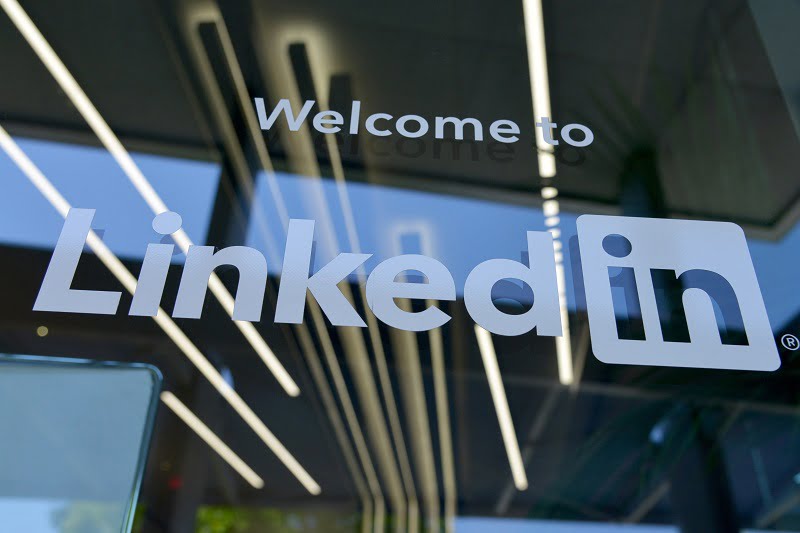
LinkedIn Introduces Anti-Scam and Verification Features
LinkedIn, the popular work-oriented social media site, has recently announced the rollout of new verification and anti-scam features. These features aim to enhance job-seekers’ confidence by verifying jobs and account authenticity while providing warnings for high-risk content. In response to an increasing number of fake accounts, LinkedIn is taking proactive steps to ensure a safer and more reliable platform for its users. This article will explore the new verification tools and message warnings introduced by LinkedIn, along with their significance in combating scams and promoting authenticity.
Verifications on Job Postings
LinkedIn’s first type of verification tool is related to job postings. These tools display information about the posters and their respective companies. Verifications can include a company page verification, job poster work email verification, and even verification of the job poster’s government ID. By providing such verifications, LinkedIn ensures that the information shared by the job posters is authentic and reliable. The verification process includes partnerships with companies like CLEAR, which specialize in verifying identities and are trusted for their reliability.
CLEAR Verification and Government ID
CLEAR, the company known for expediting security checks at airports and other venues, plays a vital role in LinkedIn’s verification process. Job posters can have their government ID verified by CLEAR, further adding to the authenticity of their profile. To verify with CLEAR, individuals are required to share a US phone number and government ID. This additional layer of verification enhances the credibility of job postings and instills confidence in job-seekers.
Verification via Microsoft Entra
In addition to CLEAR verification, LinkedIn offers another verification option through Microsoft Entra. This verification method allows users to verify both their identity and employer. However, this option is available only to companies enrolled in the program. By partnering with Microsoft Entra, LinkedIn extends its verification capabilities and ensures a more secure and trusted environment for job seekers.

About This Profile Feature
LinkedIn recently introduced the “About This Profile” feature, designed to provide users with essential information about a profile’s credibility. This feature displays when a profile was created and last updated, along with whether it has a verified phone number and/or work email associated with it. By sharing this information transparently, LinkedIn aims to identify and weed out fake accounts, contributing to a more reliable network.
Warnings for High-Risk Content
LinkedIn recognizes the importance of safeguarding its users from high-risk content. To address this concern, the platform has implemented a new message warning feature. Users now receive alerts if messages contain high-risk content that could potentially compromise their security. For example, LinkedIn alerts users when a message asks them to take the conversation to another platform, as such requests often indicate a potential scam. These warnings empower users to make informed decisions and report suspicious content without notifying the sender.
LinkedIn’s Transparency Report
LinkedIn’s latest transparency report highlights a significant surge in the number of scam accounts. Between July and December 2022, the company blocked over 58 million accounts, a notable increase compared to the previous six months’ figure of 22 million. The report also sheds light on the presence of AI-generated profiles with fake photos. Although LinkedIn’s deep-learning-based model proactively checks profile photo uploads to identify AI-generated images, a recent study by The Financial Times revealed over 1,000 active profiles utilizing such photos.
AI-Generated Profiles and Photos
The prevalence of AI-generated profiles and photos poses a challenge to platforms like LinkedIn. While efforts are being made to detect and prevent the use of AI-generated images, the scale and complexity of the issue necessitate ongoing improvements. Despite LinkedIn’s proactive measures, the persistence of AI-generated profiles underscores the importance of vigilance and user awareness.
Expanding Access to Verification Tools
LinkedIn acknowledges that the rollout of verifications on job postings is an ongoing process. While these tools may not be immediately visible to all users, they will become more prevalent as the company expands access. LinkedIn remains committed to ensuring that users have the necessary tools and resources to distinguish between genuine and potentially fraudulent job postings. In the meantime, users are encouraged to review LinkedIn’s tips on identifying and avoiding suspicious job postings.
Tips to Spot and Avoid Suspicious Job Postings
To assist users in navigating the platform safely, LinkedIn provides valuable tips on recognizing and steering clear of suspicious job postings. These tips educate job-seekers on indicators of potentially fraudulent activities and offer guidance on how to proceed cautiously. By empowering users with knowledge, LinkedIn aims to foster a community that is well-informed and proactive in identifying scams.
LinkedIn’s new verification and anti-scam features are significant steps towards creating a safer and more trustworthy platform. By implementing job and account verifications, introducing message warnings, and enhancing transparency, LinkedIn reinforces its commitment to user security and authenticity. As the company expands access to these tools and continues to refine its processes, users can have greater confidence in dealing with real companies and jobs on LinkedIn.



